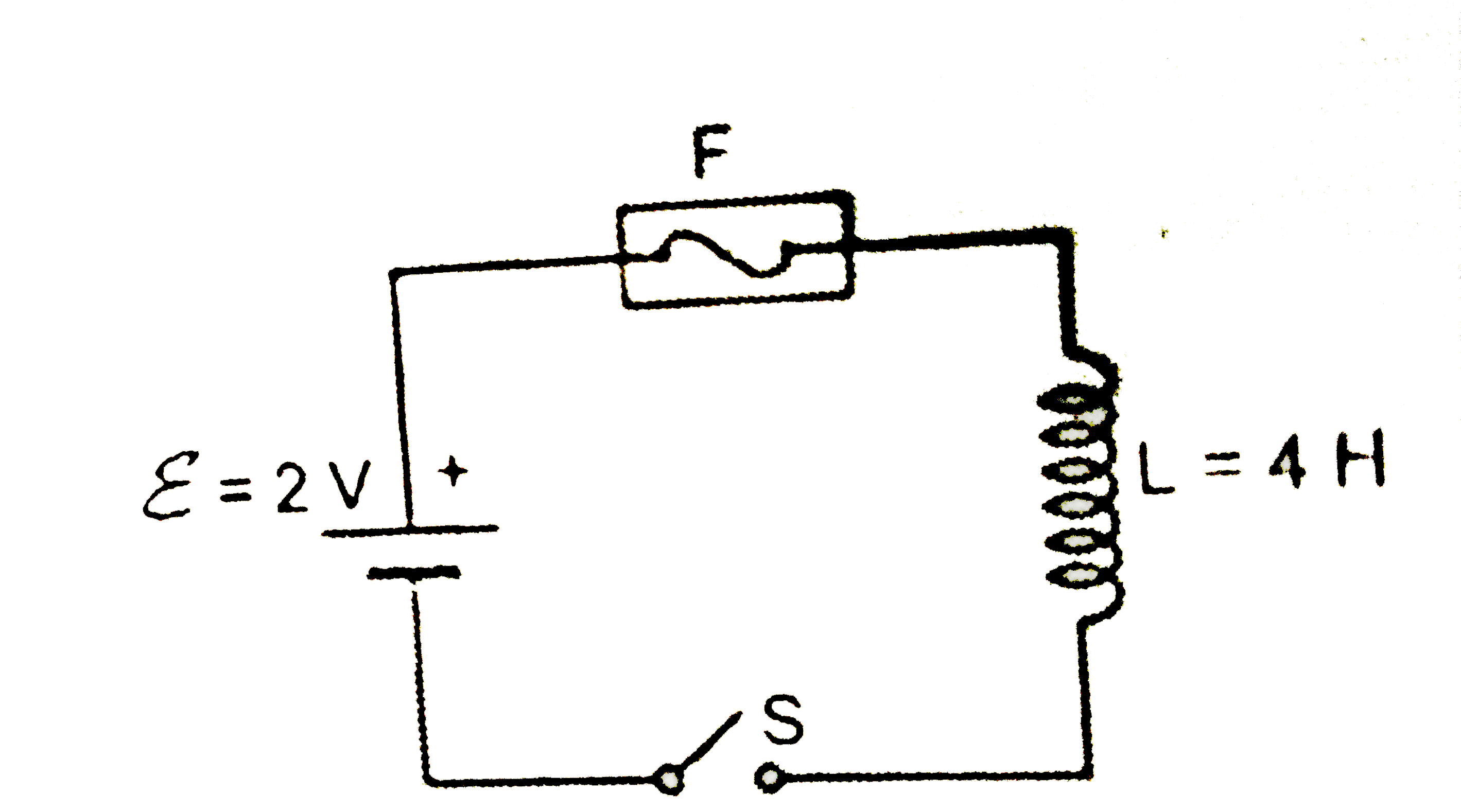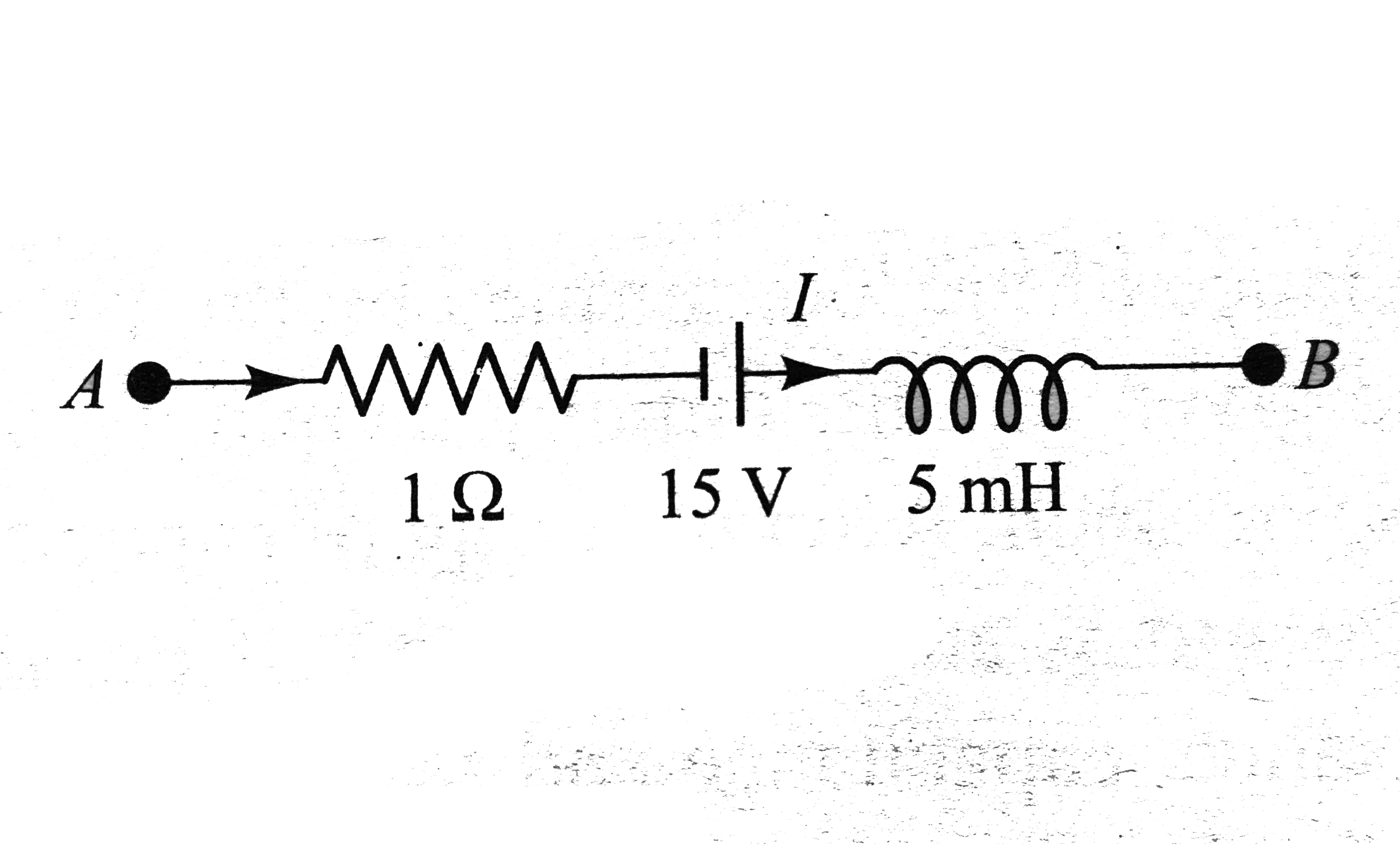The network shown in the figure is a part of a copmplete circuit. If at a certain instant, the current is and decreasing at the rate of , then (in volt) is
'(##CEN_KSR_PHY_JEE_CO23_E01_022_Q03##)'
The correct Answer is:15
Topper's Solved these Questions
Similar Questions
The network shown in the figure is part of a complete circuit. If at a certain instant, the current I is 5A and is decreasing at a rate 103A/s then VB−VA is

View SolutionThe network shown in figure is a part of a complete circuit. If at a certain instant, the current i is 4 A and is increasing at a rate of 103A/S. ThenVB−VA will be
View Solution
Knowledge Check
The network shown in the figure is part of a complete circuit. If at a certain instant, the current I is 5A and is decreasing at a rate 103A/s then VB−VA is
 A20VB15VC10VD5V
A20VB15VC10VD5VThe network shown in the figure is a part of complete circuit. What is the potential difference VB−VA when the current I is 5A and is decreasing at a rate of 103A/s?
 A5VB10VC15VD20V
A5VB10VC15VD20V
The network shows in Fig is part of a complate circuit. If at a certain instant the current (I) is 5A, and is decreasing at a rate of 105As−1 then VB−VA=−V.

View SolutionThe network shows in Fig is part of a complate circuit. If at a certain instant the current (I) is 5A, and is decreasing at a rate of 105As−1 then VB−VA=−V.

View SolutionThe network shown in the figure is part of a complete circuit instant the current (I) is 5A and is decreasing at a rate of 103 A s−1, then the value of VB−BA is

View SolutionThe network shown in the figure is part of a complete cirtain instant the current (I) is 5A and is decreasing at a rate of 103 A s−1, then the value of VB−BA is

View SolutionThe network shown in the figure is a part of complete circuit. What is the potential difference VB−VA when the current I is 5A and is decreasing at a rate of 103A/s?

View SolutionThe network shown in Fig. is a part of a complete circuit.What is the potential difference VB−VA when the current I is 5A and is decreasing at a rate of 102(A/s) ?

View Solution
